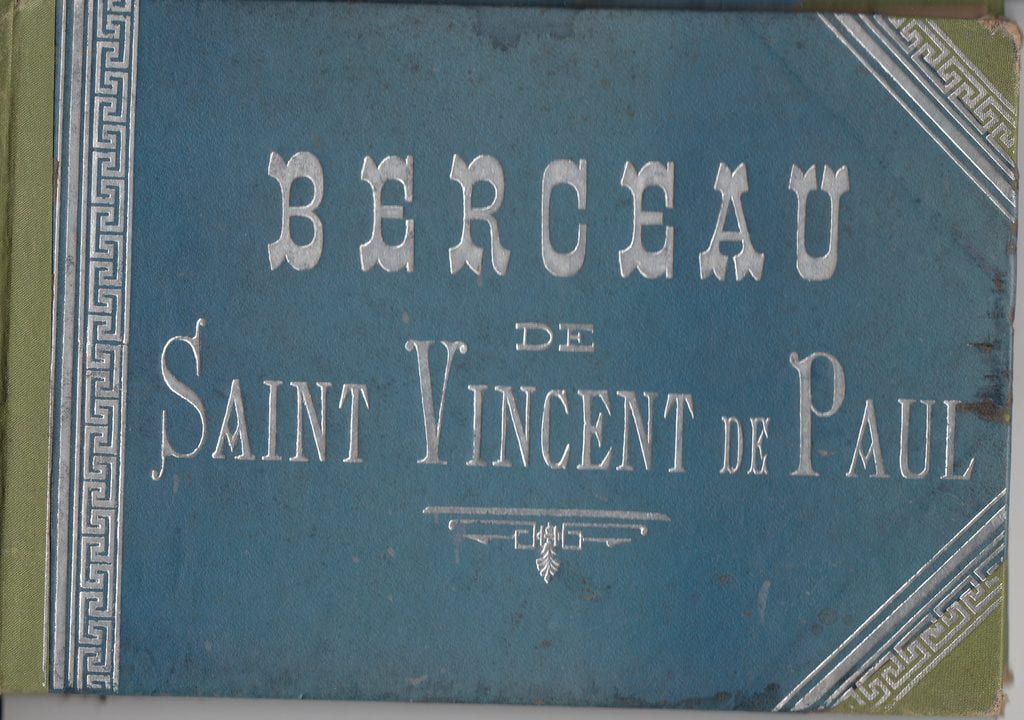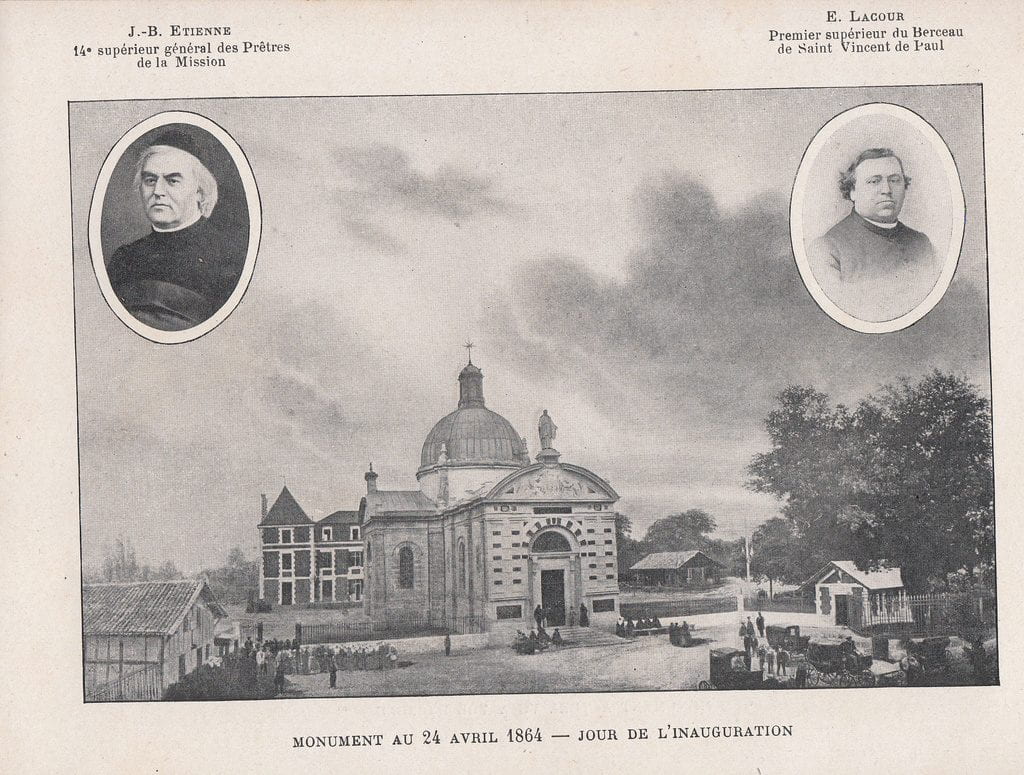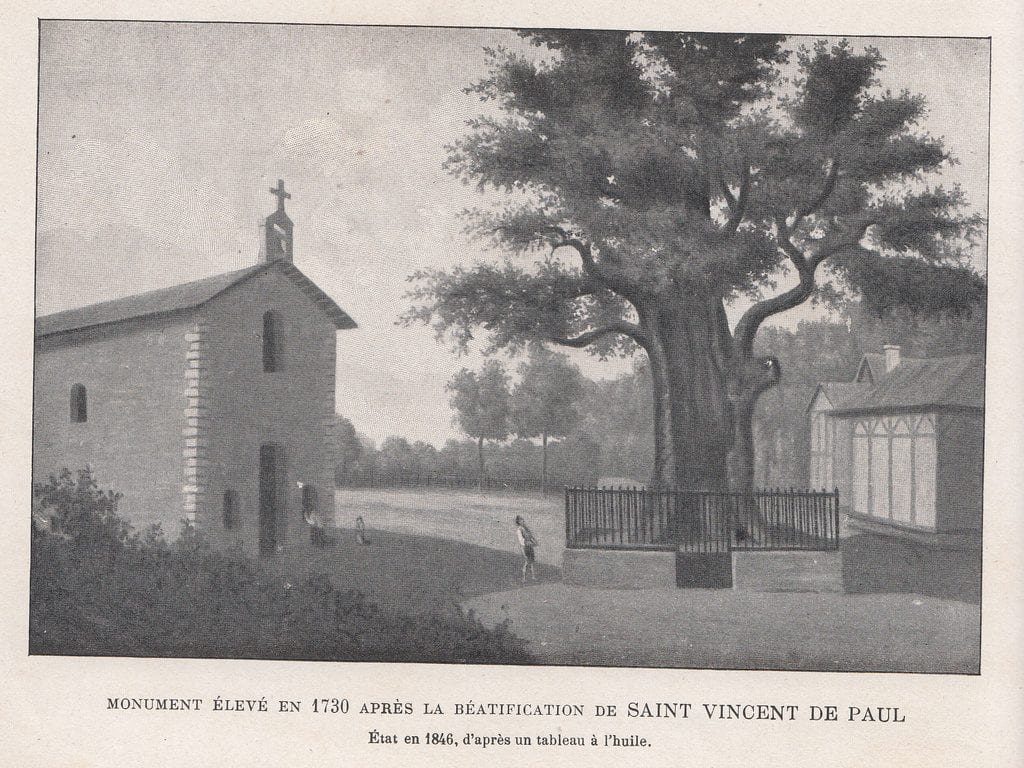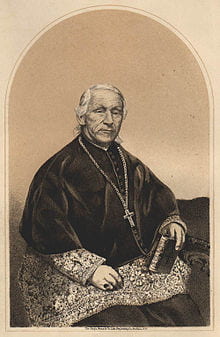The Vincentiana Collection at Archives and Special Collections of DePaul University recently purchased a turn of the 20th century commemorative book on the Berceau of Saint Vincent de Paul. The work illustrates the shrine, the orphanage, hospice, and ecole apostolique all works of the confreres and sisters that surrounded the shrine. Of particular interest is a rare view of the previous shrine.
Author: bcicirel
Newsnote: Rare Pre-Revolutionary Saint-Lazare shrine medal purchased
The Vincentiana Collection at the Archives and Special Collections Department of DePaul University’s John Richardson Library has recently purchased what we believe to be the only known extant medal of the original shrine of Vincent de Paul located before the French Revolution at old Saint-Lazare on the rue Saint-Denis. Even though the medal is in degraded condition from being buried in soil, the reverse clearly shows the pre-revolutionary chasse that housed the saint’s remains after his beatification in 1729. After the revolution, the Lazaristes at new Saint-Lazare on the rue de Sevres reproduced this medal but with the image of the new Oudiot chasse that was the center-piece of the new chapel which received Vincent’s remains in April of 1830.
Newsnote: Vincentiana Purchase of the week: Beatification of Louise de Marillac and the Martyrs of Arras
It has been recently announced that the feast of Louise de Marillac has been moved to May 9th (the anniversary of her beatification in 1920). We have been able to find a number of commemorative postcards from her beatification celebrations. Today’s postcard is from the Church of Notre Dame du Rosaire in Tunis, Algeria. Algeria was a french colony from 1830 to 1962, and the French colonists established a colonial version of French Catholicism including, dioceses, convents, monasteries, schools, and parishes. Most of these disappeared with the end of the colonial period. The Lazaristes and Filles de la Charites were part of this implanted religious colonialism. This postcard reminds us of this chapter in French imperial history and French religious imperial history as well.
Newsnote: Lost and Found
A previously lost autograph letter of Saint Vincent de Paul has surfaced. The letter is dated Paris, January 12, 1642 and was addressed to Michel Dupuis, in Saint Mihiel. The letter is #563 in Coste. According to Coste the original autograph letter was at the house of the Daughters of Charity, 12 rue des Greffes in Nimes. When Volume 2 of the English translation was in preparation the editors could no longer identify the location of the letter. Recently, as the provinces of the Daughters of Charity in France undergo a consolidation the Visitatrix of France South delivered the re-discovered letter to Sr. Kathleen Appler, the superioress general of the Daughters. It is now safely housed in the archives at rue du Bac.
Newsnote: 150th anniversary of the death of Bishop John Timon, C.M., first bishop of Buffalo, New York
The year 2017 marks the 150th anniversary of the death of John Timon, C.M., the founding bishop of the Diocese of Buffalo. Among the various ways the diocese wishes to mark the occasion is to have a panel dedicated to Timon’s legacy at the 2017 meeting of the American Catholic Historical Association.
We have two speakers already, Fr. John Rybolt who will do “Timon the Vincentian” and a local scholar who will present on Timon in Texas. We are in need a third speaker. Possible topics could include Timon’s relationship with Bishop Hughes of New York, his support of the settlement of Irish immigrants in the west, his support of social services or missionary work, etc.
The conference is being held in Denver from January 5-8, 2017. Anyone interested in presenting a paper on some aspect of Timon’s legacy please contact:
Dennis A. Castillo, Ph.D.
Professor of Church History
Christ the King Seminary
711 Knox Road
East Aurora, NY 14052-0607
716-652-8900
dcastillo@cks.edu
Professor of Church History
Christ the King Seminary
711 Knox Road
East Aurora, NY 14052-0607
716-652-8900
dcastillo@cks.edu
Vincent the Charismatic
“Vincent the Charismatic” is a chapter from the book, Saint Vincent de Paul: His Mind and His Manner, by Fr. Jack Melito, C.M., published in 2010 by the Vincentian Studies Institute at DePaul University in Chicago, Illinois. Reflecting on the tremendous accomplishments of Vincent de Paul’s life, the author labels that body of work as “ministry with impact.” The “fire” of love for the poor that burned so fiercely in Vincent’s heart was the impetus that drove his life’s action. However, unlike the flashy “charismatic” one might encounter today, Vincent de Paul’s humility ruled the day and allowed him to see the true nature of his being as merely an instrument of God’s working.
Saint Vincent de Paul: His Mind and His Manner is currently out of print.
Newsnote: Vincentian Purchase of the Week Daughter of Charity, WW II Heroine
Published on February 4, 1946 by the “French Press and Information Service, New York.”
Text to accompany the photo:
“Saint-Vincent-de-Paul Religious Foundation
Founded in the 17th century by the French Priest, Vincent de Paul, the religious order which bears his name is a congregation of sisters of charity, easily recognizable by their white coifs, who are seen at work wherever distress strikes. The Mother Superior of the Sisters of Saint-Vincent-de-Paul at Stains who was awarded the Medaille de la Resistance for having hidden an American para-trooper, ten young men who were escaping deportation to Germany, as as many Jews. The heroic sister of charity also saved thirty FFI who were being pursued by the Germans during the last battles of the liberation of France.”
The French Press and Information Service in New York seems to have been the American information office for the French government in exile during World War II. The identity of the sister in the photograph (shown wearing her medal) remains to be determined.
This photo was recently added to the Vincentiana collection at DePaul University’s Archives and Special Collection Department.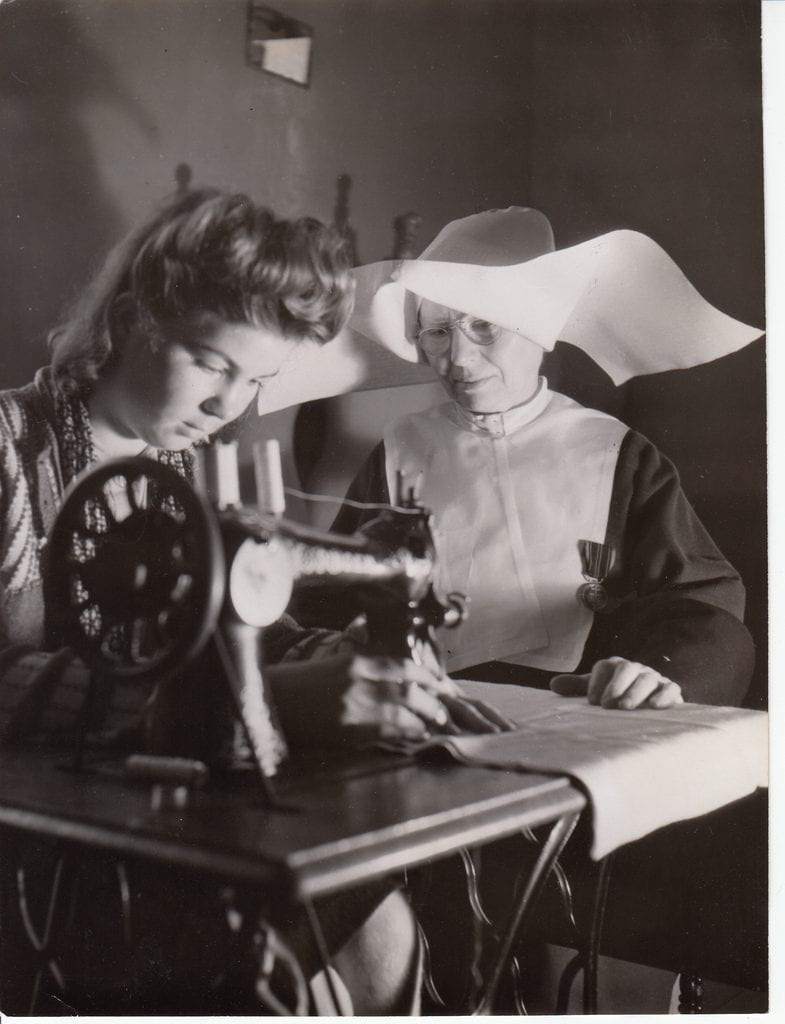
Newsnote: Vincentiana Purchase of the Week: 19th century French Daughter of Charity mortuary card
This newly-acquired mid-to-late 19th century French card was among those designed to be used as memorial cards for deceased Daughters of Charity. The card depicts a Daughter being guided to heaven by Saint Vincent de Paul to be received by the Savior. The Vincentiana collection at the Archives and Special Collections Department of DePaul University’s Richardson Library now has a number of these cards in its collection.
Elizabeth Seton: Her World and Her Church
The first part of this article gives the political, social, economic, and religious context of the world in which Elizabeth Seton lived. The second part describes the establishment and work of the Sisters of Charity. Education for all was important to early Americans, largely because everyone was supposed to read the Bible. Women had more agency than their European counterparts, although their influence was still mostly confined to the home. They were charged with instilling morality in children, and through them, in society in general. This was reflected in the curriculum of Elizabeth Seton’s school, Saint Joseph’s Academy. The outlook and influence of John Carroll, the United States’ first bishop whose diocese comprised the entire country, is discussed. He was a friend of Elizabeth’s and was among those who supported the opening of Saint Joseph’s. Enlightenment ideals, especially openness, tolerance, and optimism about human nature, were embodied in the attitudes and work of the Sisters of Charity.
“Elizabeth Seton: Her World and Her Church” is an article published in the Vincentian Heritage Journal, Volume 14, Issue 2, Article 1, (1993) and is available at: https://via.library.depaul.edu/vhj/vol14/iss2/1
Newsnote: Vincentiana Purchase of the week: Rare 19th century holy card of Vincent de Paul
This mid-to-late 19th century, color, holy card has an unusual depiction of St. Vincent on a battlefield
with confreres and a Daughter of Charity ministering in the background. This is no doubt inspired by a similar original 18th century painting from Saint-Lazare now in the parish church of Sainte-Marguerite in Paris. The legend at the bottom of the card reads: “St. Vincent communicated his spirit so well to his children that they braved famine and the plague to care for the wounded and dying.”
This card was recently acquired for the Vincentiana collection in the Archives and Special Collections Department of DePaul University’s John T. Richardson Library.
